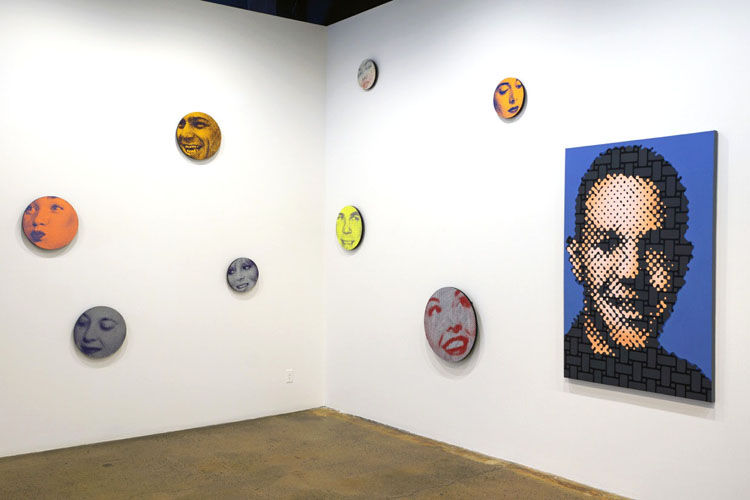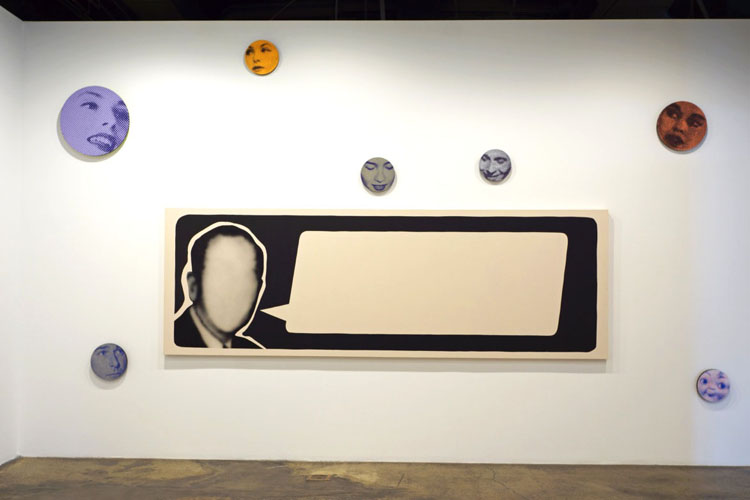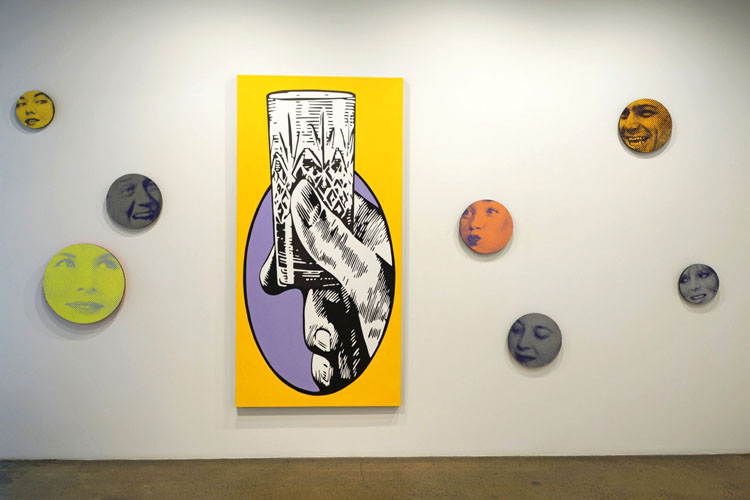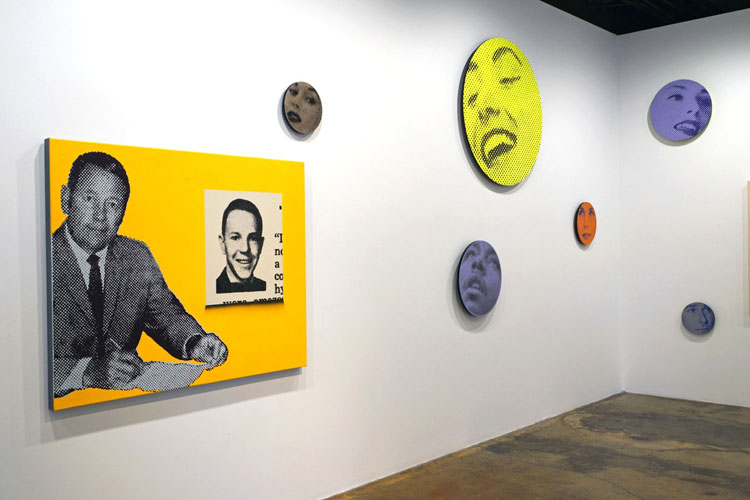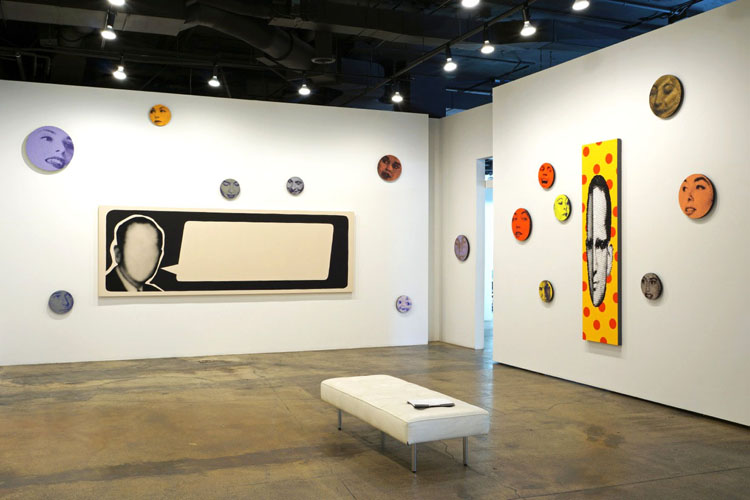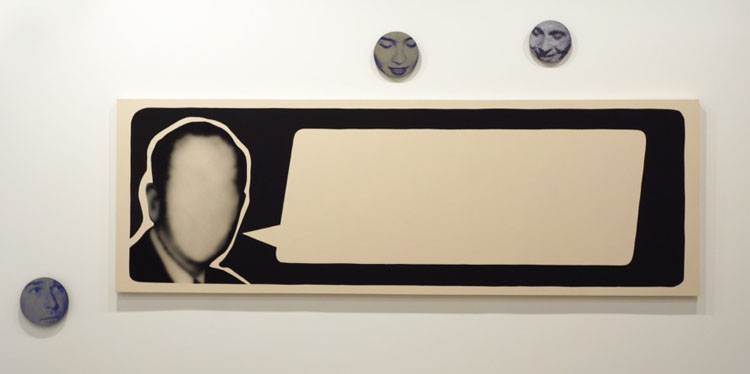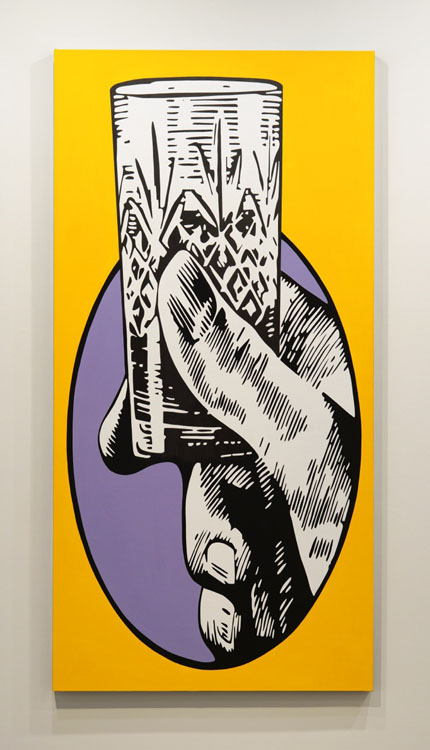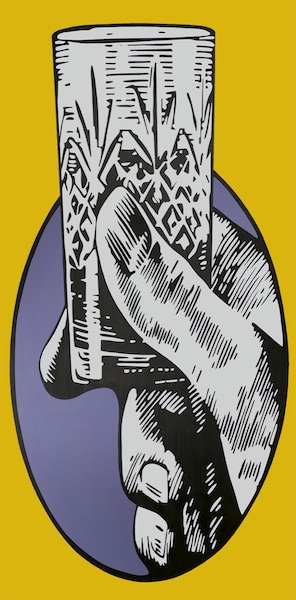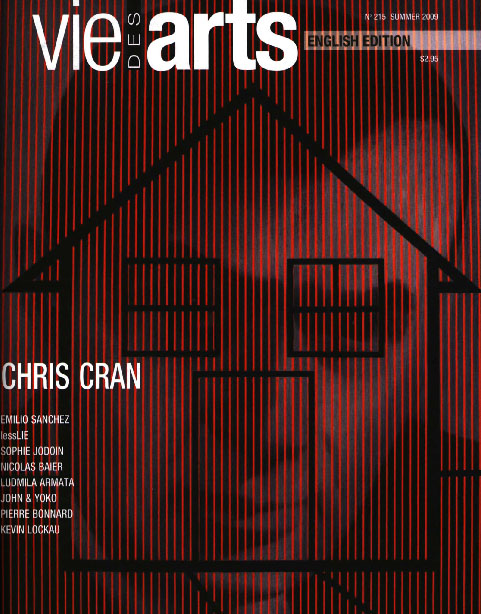An ‘Optical’ Chorus Headlines Chris Cran’s Newest Gallery Show
– Haniya Rae
Canadian artist Chris Cran has become known for challenging gallery viewer expectations. The New York Times has said that Cran “has built a career on tampering with people’s perceptions,” and declared that the artist fully realizes the power of painting. A new exhibition at Wilding Cran Gallery, “That’s An Excellent Question!” will showcase 31 new paintings by Cran, with each work playing on optical illusions, and as the exhibition’s title suggests, prompting contemplation. Cran considers these new paintings a continuation of his previous “Chorus Series,” named for the chorus in ancient Greek tragedies, a panel of actors who comment on the dramatic action of the play. Like those of the Greek chorus, Cran’s faces often display many moods, ranging from excitement to disdain to surprise, and are intended to be placed around other works, which in jest allows the paintings to “comment” on the exhibition itself, likening the exhibition to a theater.
Many of these optically daring paintings of faces use oval or round canvases that are almost reminiscent of mirrors—or a nod to Renaissance tondo compositions. These works as well as rectangular canvases featuring still life imagery—a cluster of lemons, flowers in a vase—are realized through careful patterning that creates varied interpretations of the photographic image, resembling newspaper print images in some works and fuzzy television screens in others.
Beige/Purple Woman (2014) features a woman’s face stretched to fit an elongated oval; she looks apprehensively to the side, as if she’s nervous about what will happen next. Beige/Brown Woman (2014) features another female face cropped closely within a circular canvas; she could be asleep, looking downwards, or deep in thought. When they’re isolated, these works leave viewers wondering; about the the unseen life going on outside of these cropped forms, and about the characters and stories that they encapsulate and conceal. Together though in the exhibition, the works are in visual conversation; hung on the gallery walls at varying heights they evoke the idea of floating putti or cherubs. Their stolen glances and startled reactions are correlate to one another, and the scattered still lifes and poster-like images—two faces are delighted to see the smiling faces of The Beatles. A feast for the eyes and the mind, the show is an immersive visual and contemplative experience, where the viewer seems to be caught in the crossfire; as the artist told the New York Times, “The eye loves to apprehend space, something that visually is not materially how it appears to be.




